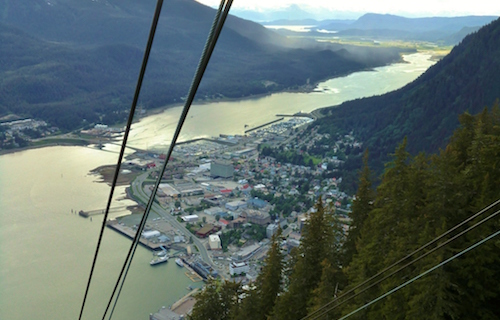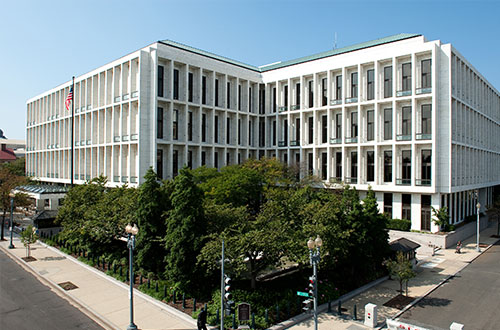Senator Murkowski Keynote: US Arctic Research Commission and Naval Ice Center
Symposium on the Impacts of an Ice-Diminishing Arctic on Naval and Maritime Operations Good morning and thank you for the invitation to be with you for this Symposium. On a warm and sticky day it is always a good thing to start off by thinking cool thoughts – Arctic ice. But as the title for this event notes, there is less of it these days.
According to the National Snow and Ice Data Center, since 2000 the minimum sea ice extent in the Arctic polar cap has been cut in half and reached a record low last year. Perhaps just as importantly, the Norwegian Polar Institute – Norway’s national institution for polar research – reports that the amount of multi-year ice has also been cut in half, and that multi-year ice is roughly the same thickness as first-year ice – right around 2 meters. The NPI suggests that when multi-year ice thickness equals first-year ice thickness, an ice-free summer is on the horizon.
With the amount and thickness of ice decreasing, there has been a corresponding increase in the level of maritime traffic in the Arctic, particularly via the Northern Sea Route. In 2007, there were zero transits across the Northern Sea Route. In 2011, there were 41 and last year 46.
In 2011, Russia was the primary user of the route, with 26 of the 41 transits flying the Russian flag, but in 2012 the route took on a more international flavor, with ships registered in the more traditional flag states – Panama, the Marshall Islands, and Liberia – using the route on 15 occasions. The Nordic states of Norway and Finland also increased their usage with 11 transits compared to 4 in 2011.
It is also worth noting that the number of transits heading from East to West nearly doubled from 2011 to 2012 – from 11 (out of 41 total) to 21 (out of 46 total). The number of transits that were “in ballast” also dropped from 15 in 2011 to 6 in 2012. These numbers suggest that the Arctic route is becoming part of a shipping network, rather than a one-way, one-time event.
When it comes to circumpolar navigation in the Arctic, regardless of which route is taken – the Northern Sea Route, the Northwest Passage, or perhaps across the pole if we see an ice-free summer, they all converge on one end at the Bering Strait between Russia and Alaska. As these routes become increasingly more viable and more user friendly, I personally believe that there is great potential for an Arctic transshipment facility along the Aleutian Chain.
Imagine cargo transiting the Arctic from Europe being offloaded in Adak or Dutch Harbor and loaded onto ships transiting the Great North Pacific Circle Route to and from the West Coast – and vice versa. Ice-strengthened ships could be used entirely within the Arctic rather than traveling all the way to Singapore or Hong Kong, saving time, money, and allowing for an increased number of transits.
Whether a hub is developed or not, however, the level of maritime traffic is likely to increase and we are woefully behind in our infrastructure needs; from navigational aids to deep water ports and search and rescue capabilities. We need to be more creative in how we address these deficiencies. With the belt tightening coming from Washington, DC, and the increased asks and responsibilities being placed on existing assets, the federal government needs to be more flexible in how and with whom it partners.
NOAA is working on mapping the Arctic, but the timeframe for completion is decades away. Are there ways to partner with the Navy or commercial shipping interests to share data along the most traveled corridors?
I was able to include an amendment in the Senate’s version of the Water Resources Development Act (WRDA) to enable the Army Corps of Engineers to pursue partnerships with non-federal public entities to work together on deep draft ports – from initial surveys and designs all the way to maintenance and operations. This will allow states and local communities to leverage their assets and participate in these projects. I am hopeful that at some point we will be able to similarly engage the private sector on these initiatives as well.
I would like to touch on one more topic before I conclude, and that is the Arctic as a “Zone of Peace.” The Arctic is not presently subject to the type of long-standing disputes and entrenched views that make international cooperation in the region difficult. Quite the opposite. The Arctic is so new to the international arena that we are still in the process of drawing up the rules of the road. As evidenced by the admission of six non-Arctic nations (Japan, China, South Korea, India, Italy, and Singapore) as permanent observers to the Arctic Council at its most recent ministerial, however, it is an area that is starting to garner increased international attention and recognition of its tremendous potential.
That makes it even more important that the United States take the lead in guiding international policy decisions relating to the Arctic, particularly as we look to take the Chair of the Arctic Council in 2015. With the admission of these nations, the Arctic Council has been reaffirmed as the primary forum for Arctic cooperation. The Council is more than just a regional body – it is setting policies for the Arctic that will be abided by all nations, and the U.S. needs to be at the forefront of the Council’s activities.
And I would be remiss if I did not mention that the increased interest by other nations only enhances the need for the United States to become a party to the Convention on the Law of the Sea, which will ensure our military’s freedom of navigation in international waterways and provide certainty for US rights in the Arctic, including the potential to lay claim to an additional area of the Arctic twice the size of California.
With that, I would be happy to take a few questions.
###








